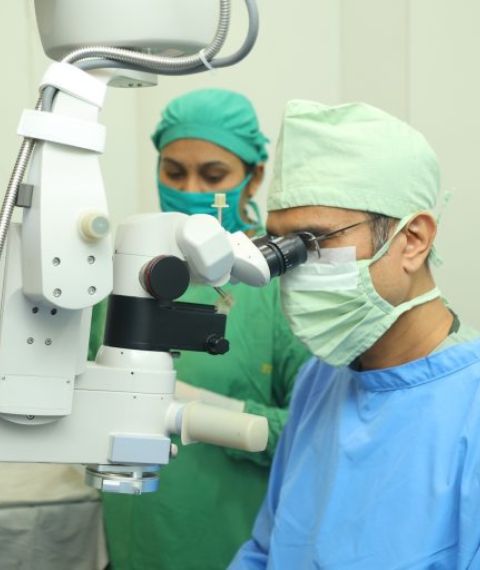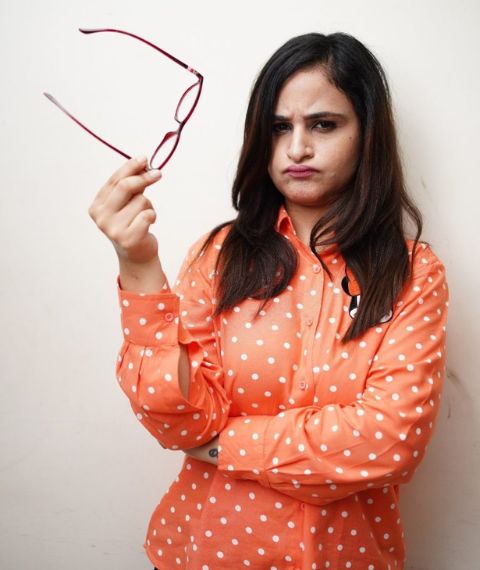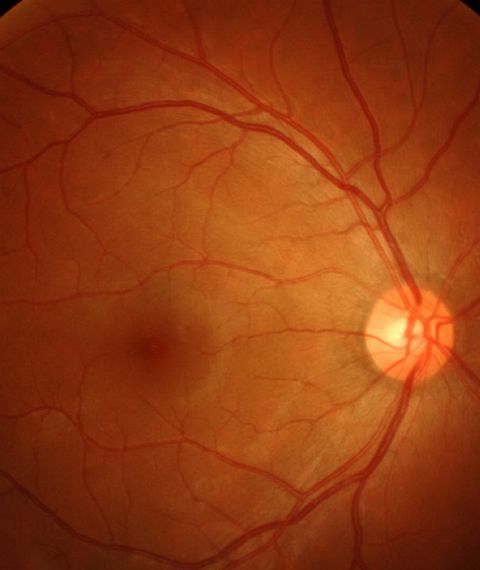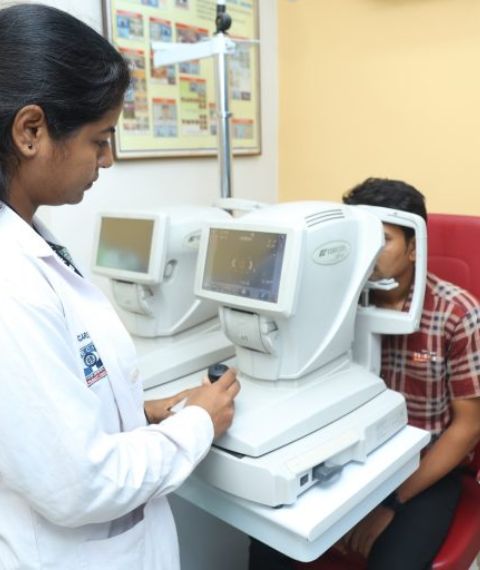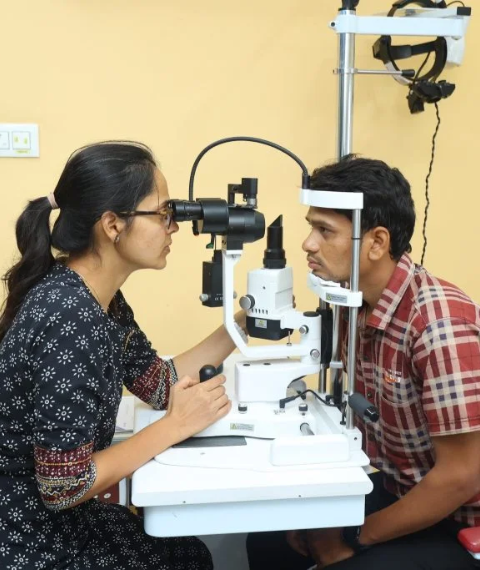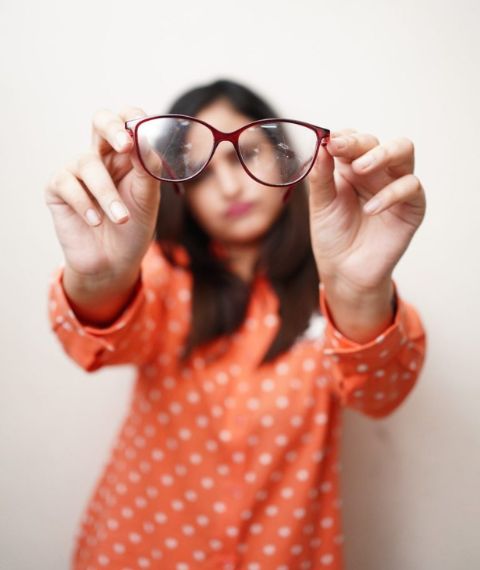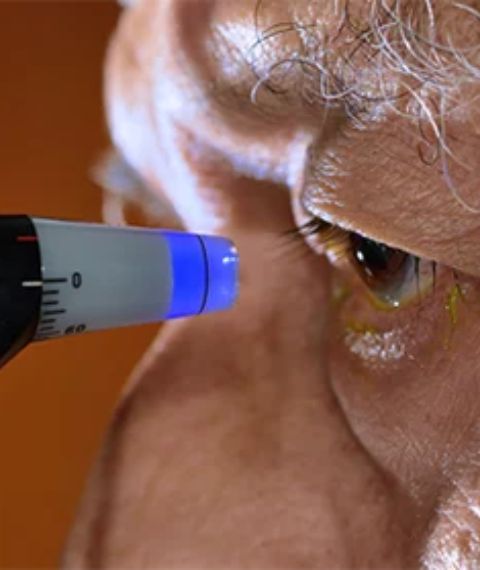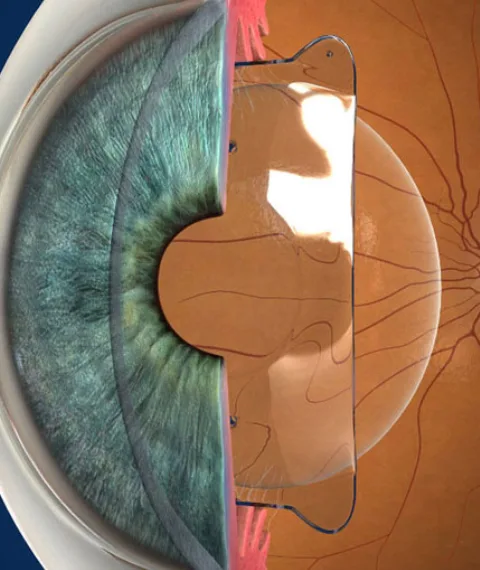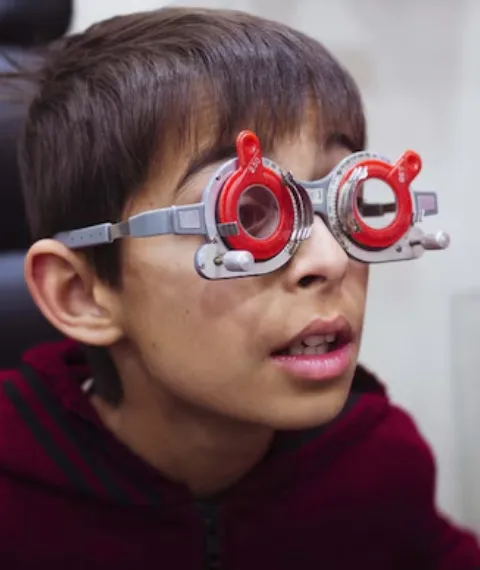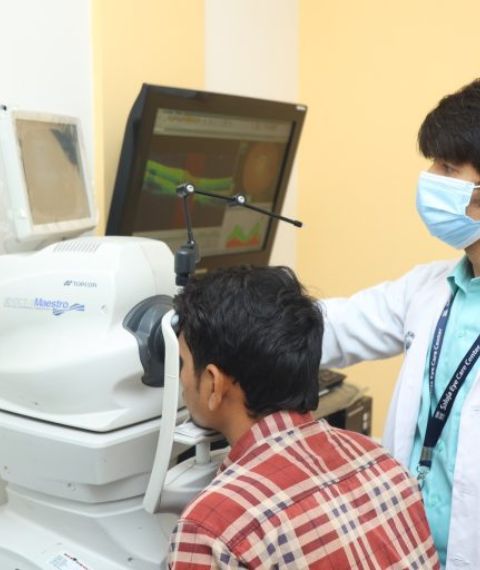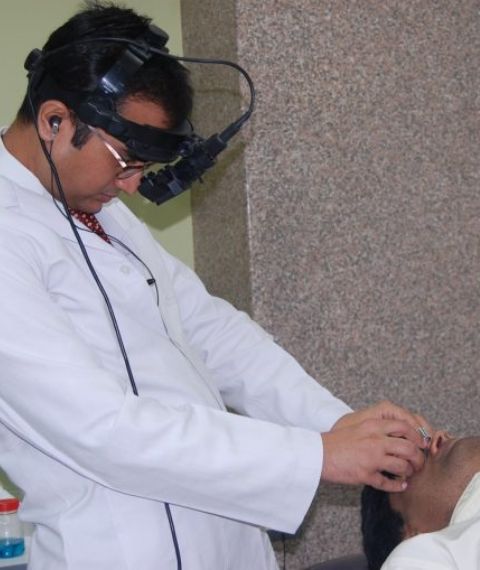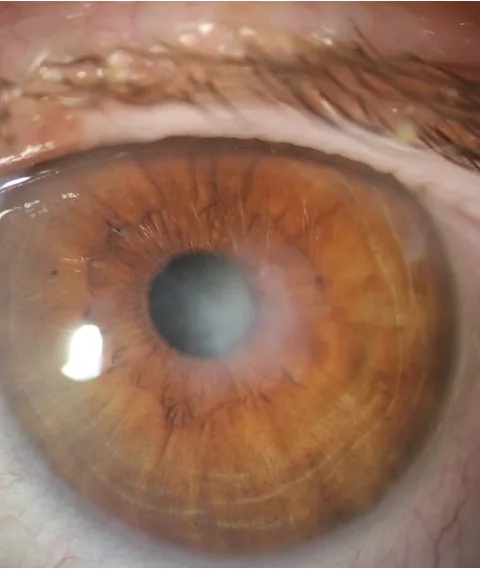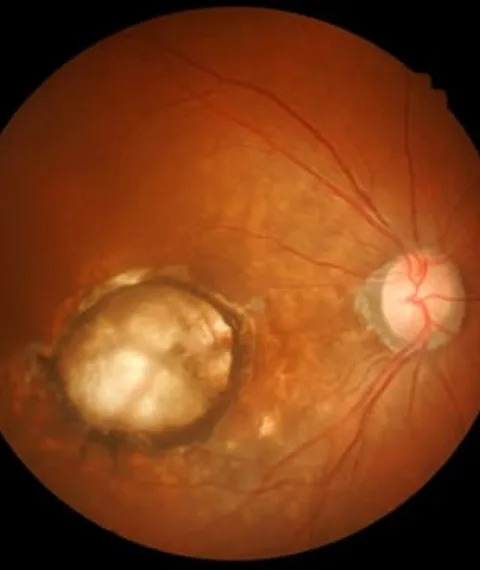Frequently Asked Questions
FAQs
Frequently Asked Questions
Clouding of your natural lens that causes blurred or hazy vision.
Usually no. It is typically done under local anesthesia with numbing drops. You may feel pressure but not pain.
About 15–20 minutes per eye in most routine cases.
Many notice clearer vision within 24–48 hours; vision continues to improve over the next few weeks.
Most day-to-day activities resume in a few days; complete healing often takes 2–6 weeks with drops as prescribed.
Infection, bleeding, inflammation, swelling, elevated eye pressure, or retinal detachment are uncommon but possible.
Avoid rubbing the eye, heavy lifting, swimming, and dusty environments until your doctor clears you. Use drops exactly as instructed.
Many patients still need glasses for some tasks. Your doctor will guide you on expectations for your case.
Yes, but good sugar control and retina evaluation are important to optimize outcomes.
Age 18+, stable prescription for ~1 year, healthy corneas, and no active eye disease. Pregnancy/breastfeeding and certain conditions may defer surgery.
For suitable candidates, it is widely performed with high satisfaction. As with any surgery, risks exist.
You may feel pressure but usually no pain during surgery; mild irritation can occur for a day or two.
Often within 24 hours, with refinement over the next days to weeks.
Dry eye, glare/halos at night, under/over-correction, rare infection. Most are temporary and manageable.
PRK or ICL may be suitable; your doctor will advise.
PRK or ICL may be suitable; your doctor will advise.
A laser reshapes the cornea without creating a flap, making it an option for thinner corneas or certain lifestyles.
No corneal flap in PRK; healing is slower with more discomfort initially, but long‑term results are comparable for appropriate candidates.
Expect light sensitivity and discomfort for a few days; pain control and bandage contact lens help.
Those with thin corneas, surface irregularities, or when flap-related issues are a concern.
Functional vision returns in days; optimal clarity can take several weeks, sometimes months.
A thin, light‑sensitive tissue lining the back of the eye, essential for sharp vision.
Sudden floaters, flashes, a curtain/shadow over vision, or sudden vision loss—seek care immediately.
Diabetic retinopathy, age‑related macular degeneration (AMD), retinal tears/detachment, vein occlusion.
Yes—options include laser, injections, and surgery, depending on diagnosis and severity.
Retinal disease can progress silently; timely treatment prevents irreversible vision loss.
We provide all modern modalities of diabetic eye care under one roof:
– Green Laser Therapy – to treat fragile new retinal vessels and prevent bleeding
– Intravitreal Injections – anti-VEGF & steroid injections to control swelling (macular edema)
– Retinal Surgery (Vitrectomy, Scleral Buckling) – for complications like vitreous hemorrhage or retinal detachment
– Comprehensive Glaucoma & Cataract Management – specially tailored for diabetic patients
In the early stages, diabetic retinopathy often has no symptoms. Regular eye check-ups are the only way to detect changes before they threaten your vision. At our center, we recommend annual retinal screening for all diabetic patients, and more frequent monitoring if retinopathy is already detected.
– Laser treatments can reduce the risk of severe vision loss but cannot restore lost vision.
– Injections and surgeries help stabilize and preserve vision, though lifelong follow-up is essential.
– With timely care, most patients can continue to enjoy useful vision and avoid blindness.
See Life Clearly Again
Advanced Cataract Care with Premium Lens Options.
Book Cataract Evaluation
Book Cataract Evaluation Call NowDry eye cannot always be completely cured, but with proper management, patients can live comfortably with healthy vision.
If you have persistent redness, irritation, tiredness, or painful eyes, schedule an appointment with an ophthalmologist immediately.
Yes. The implant is additive and can be removed or exchanged if needed (ICL does not treat presbyopia).
Premium IOLs (multifocal, trifocal, EDOF, toric) that can reduce dependence on glasses after cataract/RLE.
A staged approach: ICL (lenticular) handles most power; corneal laser fine‑tunes residual error/astigmatism.
Most patients reduce dependence greatly; outcomes depend on eye health, IOL type, and lifestyle—night driving and fine print may still need glasses.
No. Damage already done cannot be reversed. Treatment preserves the sight you have
Usually yes. The plan may change over time, but follow‑up is lifelong.
For many people SLT can reduce drop burden, but suitability varies. LPI is reserved for angle‑closure mechanisms.
Glaucoma is silent early on. OCT and visual fields help us detect changes months or years before you notice symptoms.
Cataract surgery can slightly lower IOP and is often a good time to consider MIGS; your surgeon will advise.
Trusted Eye Care in Indore for Over 17 Years
Book Your Appointment Today
Expert doctors. Modern technology. Clearer vision starts here. Schedule your consultation with Saluja Eye Care now.
Book Appointment Call NowNo. Earlier is better—especially with family history or symptoms.
Yes; multiple RCTs show benefit with DIMS spectacles and myopia-control contact lenses.
Rebound can occur in some contexts; we plan dose and cessation carefully.
Evidence is emerging; some recent trials show outcomes comparable to patching.
Both conditions are commonly linked to:
• UV rays from sunlight ☀️
• Dust, wind, and pollution 🌬️
• Dry eye conditions
Individuals living in hot, dry, or dusty environments (like Central India) are at higher risk.
- Redness and swelling of the conjunctiva
• A yellowish spot or bump on the eye’s surface
• Dryness, irritation, or gritty sensation (like sand in the eye)
• Blurred or reduced vision (in advanced pterygium cases)
- Redness and swelling of the conjunctiva
- For Pinguecula (Pinkiflua):
– Lubricating eye drops to reduce irritation
– Steroid drops (in case of significant redness or swelling)
– Surgery is rarely needed
• For Pterygium (Terigen):
– Lubricating / steroid eye drops for mild cases
– Surgical removal when the growth threatens vision or causes discomfort
– Conjunctival graft surgery (placing a thin tissue layer to prevent recurrence)
Our expert surgeons use safe, modern techniques to reduce recurrence and ensure faster recovery.
- For Pinguecula (Pinkiflua):
- Wear UV-protective sunglasses outdoors
• Use protective eyewear in dusty/windy areas
• Keep eyes moist with artificial tears
• Regular eye check-ups for early detection
- Wear UV-protective sunglasses outdoors
It is inflammation, not a contagious infection; however, certain infections can cause uveitis.
Some people require prolonged or repeated therapy; we individualize plans and taper medicines safely.
Avoid driving during active inflammation, severe glare, or when vision is reduced.
Don’t smoke, wear UV protection outdoors, take medicines on time, keep follow‑ups.
Many episodes resolve with treatment; the aim is control, prevention of recurrences, and protection of vision.
Conditions include keratoconus/ectasia, infectious keratitis, corneal dystrophies, corneal scars/edema, and ocular surface disease (including dry eye)
With slit-lamp exam plus specialized tests such as corneal topography/tomography, pachymetry, and anterior segment OCT.
With slit-lamp exam plus specialized tests such as corneal topography/tomography, pachymetry, and anterior segment OCT.
Rigid gas-permeable, scleral, or hybrid lenses improve vision in irregular corneas when glasses are insufficient.
If scarring/edema or irregularity severely reduces vision, keratoplasty may be advised: DMEK/DSEK (endothelial) or PK (full-thickness).
Yes—lamellar techniques (DMEK/DSEK/DALK) offer faster recovery and lower rejection risk.
Prompt targeted antimicrobial therapy, sometimes guided by lab tests.
Avoid unclean contact lenses, wear protective eyewear, seek early care for pain/redness, and attend follow-ups.
AMD affects the macula, typically after age 50. Risks: age, family history, smoking, and vascular disease.
Dry (atrophic) causes gradual vision loss; Wet (neovascular) causes faster loss with abnormal blood vessel growth.
By dilated exam, OCT, fundus photography, and fluorescein angiography for wet AMD.
Wet AMD: intravitreal anti-VEGF injections, sometimes lasers. Dry AMD: lifestyle and supplements for progression slowing.
AREDS2 supplements can slow progression in intermediate AMD, not for prevention. Smokers should avoid beta-carotene.
Often monthly initially, then adjusted in a treat-and-extend schedule based on OCT results.
Quit smoking, eat leafy greens and fish, exercise, and manage blood pressure and cholesterol.
AMD affects central vision but most patients retain useful vision with treatment and low-vision aids.
About Us
Saluja Eye Care Center, established in 2008, is among Indore’s leading NABH-accredited eye hospitals. Ranked among the Top 3 by Three Best Rated, we are trusted for advanced cataract surgery, LASIK/PRK, ICL, and comprehensive services including Retina, Glaucoma, Pediatric, Cornea & Oculoplasty. With state-of-the-art technology and expert ophthalmologists, we deliver ethical, world-class care that ensures excellent outcomes and patient satisfaction
हमारे बारे में
सालुजा आई केयर सेंटर, 2008 में स्थापित, इंदौर के प्रमुख NABH-मान्यता प्राप्त नेत्र अस्पतालों में से एक है। Three Best Rated द्वारा शीर्ष 3 में रैंक किया गया, हम उन्नत मोतियाबिंद सर्जरी, LASIK/PRK, ICL और रेटिना, ग्लूकोमा, पीडियाट्रिक, कॉर्निया और ऑक्युलोप्लास्टी सहित संपूर्ण सेवाओं के लिए विश्वसनीय हैं। आधुनिक तकनीक और विशेषज्ञ नेत्र चिकित्सकों के साथ, हम नैतिक, विश्वस्तरीय देखभाल प्रदान करते हैं जो उत्कृष्ट परिणाम और रोगी संतोष सुनिश्चित करती है।

Appointment
Need a Doctor for Check-up?
Call Us Today!
Don’t let cataract affect your lifestyle. Get your personalized cataract solution today.
+91-7879301301
For Appointment

